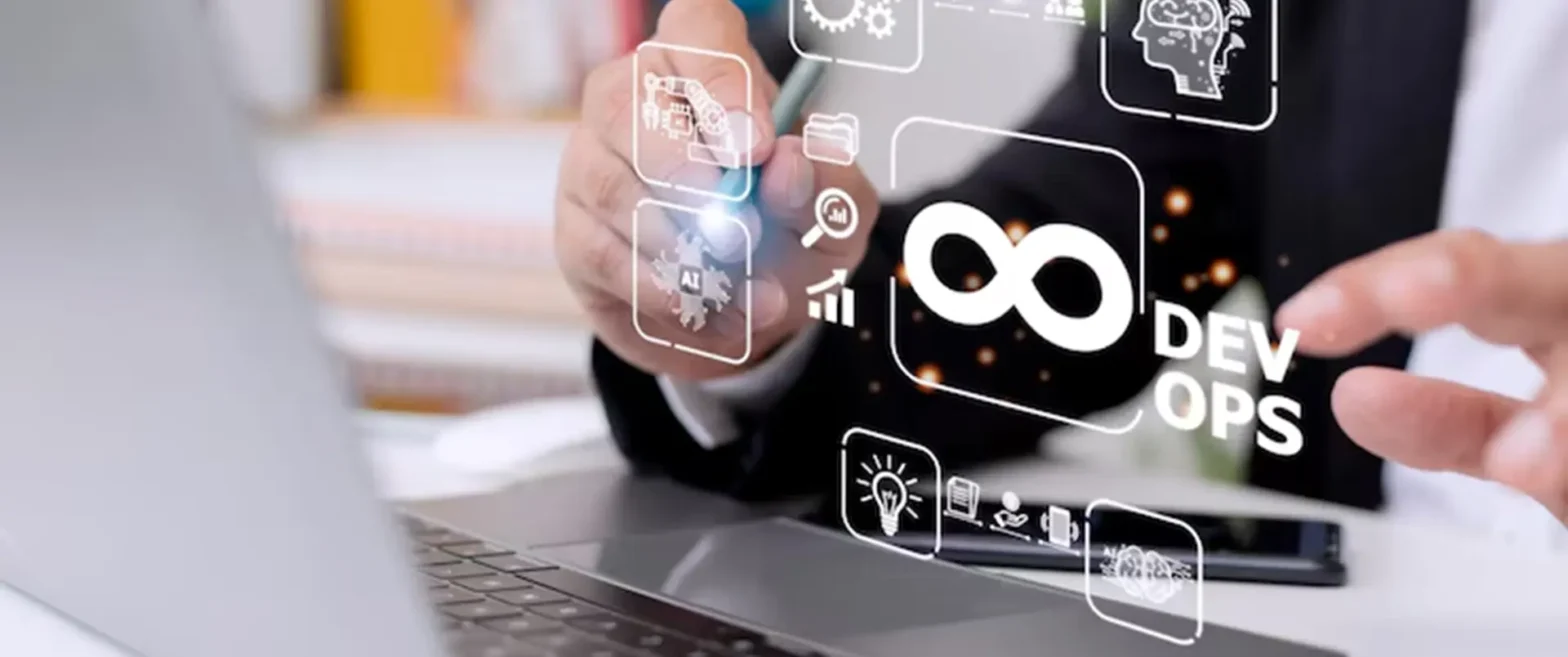What is DevSecOps?
DevSecOps is the methodology that integrates security practices right within the DevOps flow. Security would no longer be an afterthought, and this should make it a shared responsibility throughout the SDLC. The philosophy now shifts from treating security as the last step to embedding it into development, testing, and deployment. Creating secure systems without compromising the velocity and efficiency of software delivery promotes collaboration among the teams of development, security, and operations.
Understanding the Cloud Security Landscape
The landscape of cloud security is being driven by increased adoption of cloud computing, coupled with associated risks. With great scalability, flexibility, and cost-efficiency, the cloud has its own unique security challenges that need to be understood and handled to guarantee the safety of one’s data, applications, and infrastructure.
Shared Responsibility Model
Cloud security is based on the shared responsibility model, wherein major security activities are divided by the cloud service provider and the customer. While the provider is liable to secure the cloud itself, including physical hardware with network security, the accountability of securing data, applications, and access controls lies with the customers. The poor understanding of this split oftentimes results in security holes that make critical assets unprotected against attacks.
Dynamic Nature of Cloud Environments
The cloud environments are highly dynamic, with resources scaling up and down nonstop. While this flexibility is great, it creates challenges for security teams because traditional security tools and methods may struggle to keep up with the rapid changes. Such ephemeral resources require advanced tooling in order to manage and monitor them, including real-time visibility, automated compliance checks, and adaptive threat detection.
Misconfigurations and Human Errors
One of the most important risks is cloud resource misconfiguration. Minor things, like leaving a bucket open to public access or using poor access controls, might also lead to data breaches and unauthorized access. Human error caused by a lack of either knowledge or oversight is still one of the leading causes of vulnerability in the cloud. Therefore, detection through automated tools for misconfiguration and training on cloud security best practices become paramount in mitigating these risks.
Benefits of DevSecOps in Cloud Security
1. Faster Response to Vulnerabilities
DevSecOps integrates safety into every stage of the continuous integration/deployment pipeline to spot any vulnerability during the development or testing process. It helps to find problems much earlier and gives a chance for their solution by developers and security teams before components reach production, reducing the attack surface on which a system is vulnerable. Most importantly, security threats are found and handled through automated scans for vulnerabilities, real-time alerts, and security-as-code-without holding up deployment schedules.
2. Reduced Risk of Misconfigurations and Compliance Violations
Cloud breaches are mainly caused by misconfigurations. DevSecOps reduces such risk by utilizing Infrastructure-as-Code tools to standardize and automate the provisioning of secure configuration, embedding compliance checks into the pipeline that is necessary to meet regulatory standards such as GDPR, HIPAA, and PCIDSS. Automation reduces human error and ensures configuration security and compliance consistently even in large-scale deployments.
3. Scalability of Security in Dynamic Cloud Environments
Contemporary cloud environments are dynamic, automatically scaling up or down resources according to demand. DevSecOps gives security the ability to keep up in real time thanks to automation of policy enforcements and monitoring.
Tools such as container security platforms, runtime application self-protection, and serverless security frameworks extend the security of workloads distributed and ephemeral across cloud environments. This scalability means that your security posture stays robust when the infrastructure changes in size or makeup.
4. Cost Efficiency by Reducing Late-Stage Fixes and Breaches
The cost of fixing security issues increases exponentially when it is done at later stages of development or post-deployment. DevSecOps practices integrate testing and security validation into every phase of development, thus considerably reducing the cost by catching and resolving issues early. Moreover, preventing breaches means avoiding the financial and reputational damage that comes with data loss, fines, and operational disruption. Continuous DevSecOps reduces downtime and improves overall system reliability.
Read More: Top App Development Companies in USA
Implementing DevSecOps for Cloud Security
Code Analysis
Code analysis needs to be continuous in the development of safe applications, since with business needs always changing, smaller, more frequent updates have to go out to customers without harming the security aspect. Not many traditional ways of security support an agile workflow. DevSecOps places quality assurance into the process of code analysis.
Tools such as SAST can contribute significantly toward early detection of potential software security problems, thus enabling safe and efficient software delivery and further reducing the possibilities of software security problems at later stages of the development cycle—a level of flexibility that is key to market change.
Automated Testing
Test automation is important for retaining the speed of testing and bringing consistency to the process during project development. Automated tests ensure repeatability with detailed reports, providing real-time feedback to developers.
In other words, including DAST and IAST technologies provides for the best detection of vulnerabilities at integration, deployment, and runtime. The errors are brought down in embedding security checks at each level of development, made efficient, and up to par in providing modern state-of-the-art security without project delays.
Change Management
The balancing of flexibility with security in cloud environments is borne in change management. A structured approach ensures that developers have full capacity and full training to approach security concerns during the changes or updates. In this regard, development and security teams will work on a project together such that a kind of shared responsibility toward the good cause of maintaining security is upheld.
The developers should also be easily able to come up with proposals for adding security controls and implementing them with the least approval time. A structure in change management not only enhances response time but also diminishes the risk of bringing vulnerabilities when updating systems.
Compliance Monitoring
In today’s regulatory landscape, adhering to standards such as HIPAA, GDPR, and SOC 2 is non-negotiable. DevSecOps integrates compliance monitoring into the development cycle, ensuring that applications and infrastructure meet regulatory expectations at all stages.
Automated solutions collect real-time compliance data with each code update, reducing the burden of manual audits. This proactive approach keeps businesses compliant, avoids costly fines, and maintains customer trust while staying on schedule.
Vulnerability Management
Proactively managing vulnerabilities is essential for secure operations. Organizations must identify, analyze, and address vulnerabilities with urgency during each software update. Beyond initial scans, regular security audits are needed to uncover emerging risks.
Continuous vulnerability monitoring tools help detect and address potential issues before exploitation. This vigilance reduces downtime, strengthens application resilience, and protects sensitive information from breaches.
Security Training
Continuous learning is a cornerstone of effective DevSecOps. Developers, operations personnel, and security teams must stay updated on the latest security protocols and standards. Certifications, workshops, and industry conferences enhance team knowledge.
Collaboration with experienced security professionals provides insights into advanced tools and techniques. By fostering a culture of learning, organizations empower their teams to anticipate and mitigate evolving threats, ensuring lasting and robust security practices.
Challenges in Adopting DevSecOps
1. Cultural Resistance
Changing to DevSecOps means breaking down traditional barriers between development, security, and operations teams, shifting to include everyone within the engineering services lifecycle. Resistance can derive from the teams themselves as they are already pushed to the max and are not likely wishing to learn new workflows or take on more work. By the same token Security teams that are used to working solo will have difficulty integrating with agile dev processes, while Developers may perceive security measures as a roadblock to rapid releases.
2. Skill Gaps
Implementing DevSecOps requires teams to have a strong understanding of both security principles and development practices. Many organizations lack personnel with cross-functional expertise, leading to knowledge gaps. Upskilling existing staff or hiring professionals with the required expertise can be time-consuming and costly.
3. Tooling Complexity
To support code analysis, vulnerability scanning, automated testing, compliance monitoring and other testing tasks, the DevSecOps ecosystem is a “full-stack” in terms of which tools are needed. With a plethora of tools available for use, choosing the right ones, integrating all of them together, and management can be pretty intimidating. Making sure the tools are all compatible with each other and that there is no overlap, while remaining cost–effective adds an equation in the complexity.
4. Scaling Security Practices
As organizations scale their cloud infrastructure up, hoping to maintain security control across dynamic, distributed environments becomes a challenging task. Figuring out how to automate security attempts to adjust with changes in infra and making sure your policies are applied everywhere takes a lot of effort.
5. Balancing Speed and Security
Be a part of the DevSecOps emphasizes for embedding security in the development and deployment processes without sacrificing the pace so cores to business. This is a tough line to walk as teams can end up back in dire need to meet a tight deadline and never give security a required priority or put in place very stringent measures in order to slow down delivery pipelines.
6. Legacy Systems and Processes
When an organization has legacy systems, this can be a big challenge. Some legacy applications may be incompatible with automation tools, or require extensive reengineering in order to meet security and compliance standards.
7. Budget Constraints
Initially adopting DevSecOps involves cost and investments in training, new tools, and process changes. For smaller companies, or businesses with limited resources, the decision to allocate resources to these efforts can be difficult.
Conclusion
DevSecOps is essential for addressing the complex security challenges of cloud environments. By integrating security into every stage of the development lifecycle, it ensures faster vulnerability detection, better compliance, and scalable security practices.
This proactive approach not only reduces risks but also aligns security with agile development, enabling organizations to innovate confidently while maintaining a robust security posture. In an era of evolving threats and dynamic cloud infrastructures, DevSecOps is the key to sustainable, secure growth.



